Shichimi Togarashi is a magical Japanese condiment. Sprinkle this mixture over rice bowls and other dishes to add flavor and crunch. It’s perfect on fish, meat, rice, or noodle dishes. The recipe below is adapted from my cookbook Ramen for Beginners.
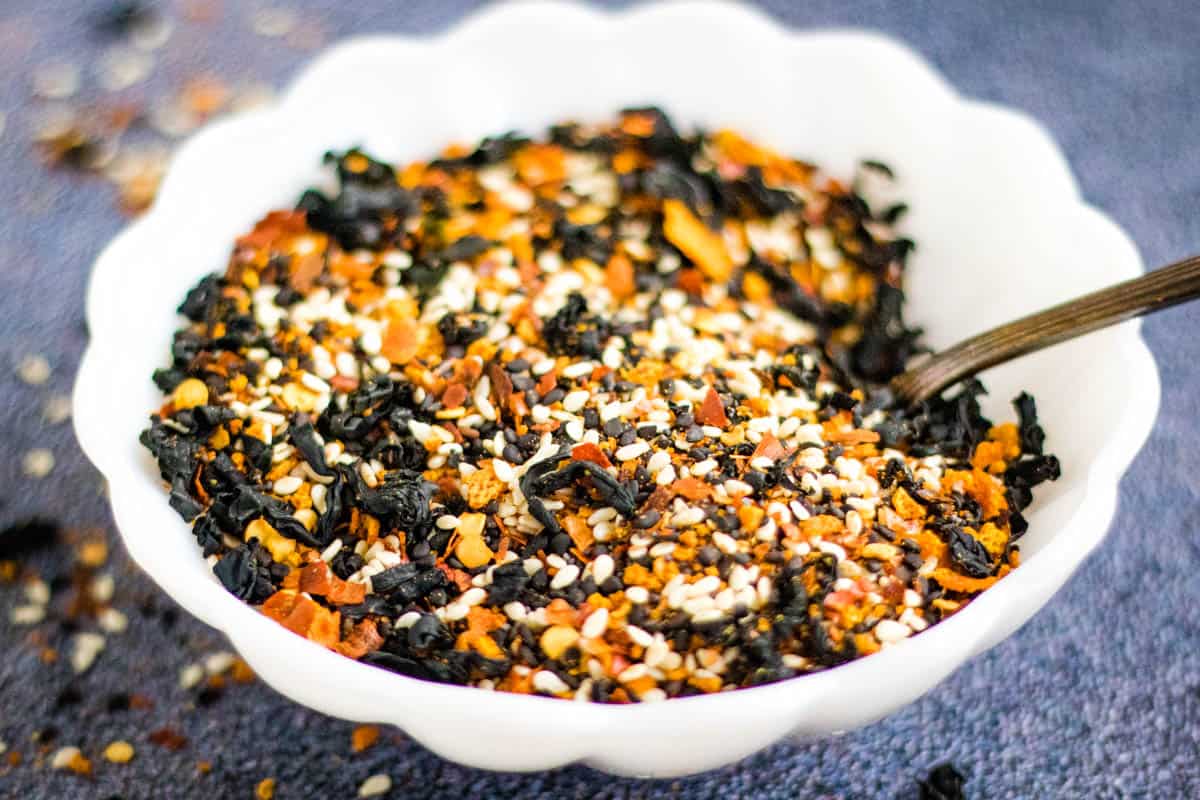
Shichimi Togarashi means “seven spice.” It is a spice mix that contains dried chile, dried orange or tangerine zest, sesame seeds, seaweed, and usually sansho pepper or Sichuan peppercorns. It’s a popular condiment that you’ll often see on Japanese tables.
Japanese cuisine is not known for spicy dishes, but every once in a while, you’ll find a dish with kick, like Shichimi Togarashi. This spice blend gets it’s heat from ground chili pepper, and also layers of nuanced flavor and a bit of crunch from the crumbled seaweed, sesame seeds, sansho pepper, and orange peel.
Shichimi Togarashi (also called schichimi togarashi) is a nice finishing touch on many Japanese dishes. It is delicious sprinkled onto grilled, broiled, or seared meat or fish. It also elevates a bowl of ramen and gives it kick.
There is a similar spice mixture called nanami togarashi, which contains the same savory flavors but has a higher proportion of orange peel. Nanami togarashi can be used interchangeably with Shichimi Togarashi.
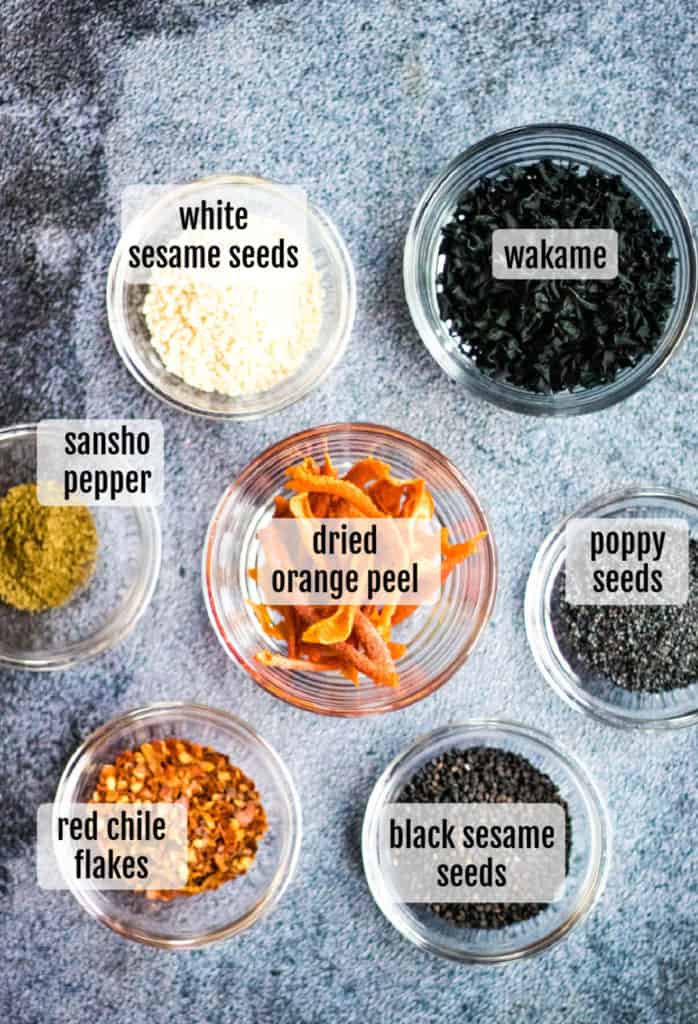
What ingredients do you need to make shichimi togarashi?
True to the name, Shichimi Togarashi has just 7 ingredients. Recipes vary—some people add ground ginger or ginger powder and leave out the sansho pepper or poppy seeds, or include added sugar or salt for instance—but this is my own custom blend.
- White sesame seeds (or golden sesame seeds)
- Black sesame seeds
- Poppy seeds (I use black poppy seeds, but you can do half and half with white poppy seeds if you like)
- Ground sansho peppercorns (aka sansyo pepper) or Szechuan peppercorns (or substitute black pepper)
- Red chili flakes or ground chili powder (preferably from Japanese red chili peppers)
- Dried wakame seaweed or toasted nori
- Dried orange zest or tangerine zest
If you don’t have dried orange peel or tangerine peel, you can make it by peeling off just the orange part of an orange peel (I use a vegetable peeler for this) and arrange the strips in a single layer on a baking sheet.
Turn your oven on to the lowest temperature (mine goes down to 170ºF) and put the orange peel inside. It could take anywhere from 30 minutes to 3 hours to dry it out depending on how moist the orange peel was to start with, how humid the air is where you live, and what temperature your oven is at.
Once the orange people is dry and crumbly, crush it with your fingers or by pulsing it in a spice grinder.
What is sansho pepper?
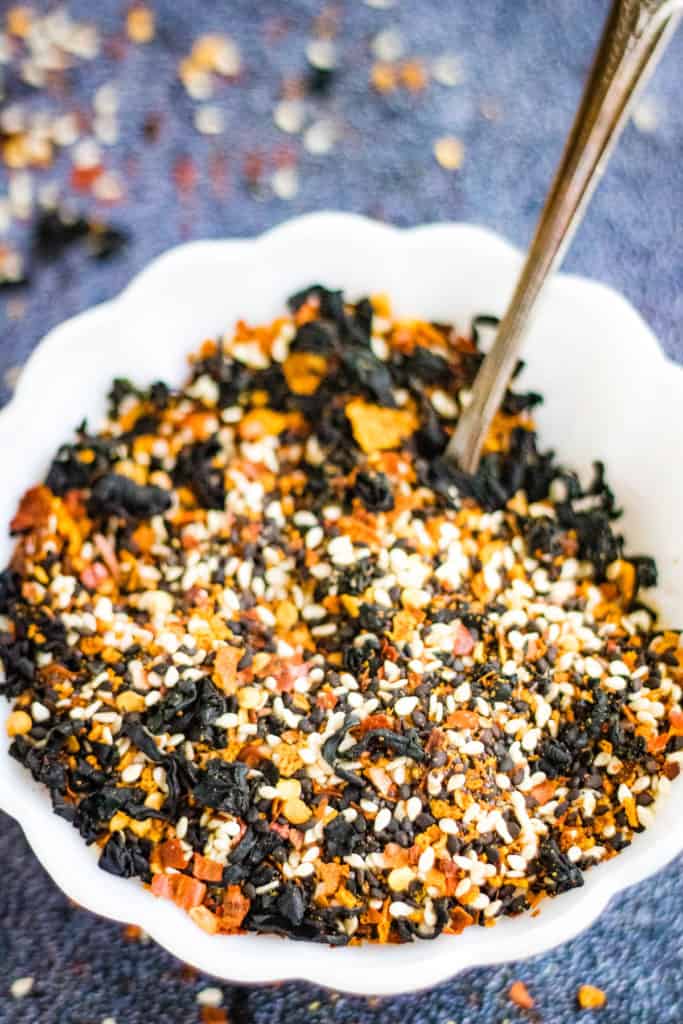
Sansho pepper is related to the mouth-numbing Szechuan peppercorn. Both have citrus-y, floral flavors and create a numbing effect on the lips and tongue. Sansho comes from a Japanese prickly ash, while Szechuan pepper comes from another prickly ash.
Sansho is green and has a more pronounced citrus flavor. Szechuan pepper is usually reddish.
These peppers aren’t hot like red chile pepper, but have a similar addictive quality thanks to the peculiar mouth-numbing quality and intriguing flavor.
You can use either sansho or Szechuan pepper in Shichimi Togirashi, though sansho is more traditional. You can buy sansho pepper at a Japanese market or Asian supermarket, or, of course, online.
What is wakame seaweed or nori seaweed?
Wakame and nori are types of seaweed. Nori is the type that comes in toasted sheets for making sushi. Wakame usually comes in small pieces. For cooking, wakame is reconstituted, and is often used in soups or salads.
I like to use it dry as a condiment because it is super crunchy and adds nice salty, briny flavor. Because the seaweed absorbs so much sea salt, you really don’t need to add salt to your Sichimi Togirashi, though some people do.
You can buy either wakame or nori at Japanese grocery stores, Asian grocery stores, and some supermarkets. You can also use nori, if that’s what you have available. Take a sheet of nori and crumble it up with your hands.
How do you make it?
This seven-spice powder is super easy to make. Just combine the ingredients together in a bowl and stir to mix.
Place the mixture in a spice grinder and pulse a few times to coarsely grind. Or you can use a mortar and pestle to break up the ingredients.
You can store it in an airtight container at room temperature for up to 3 months.
What do you serve it with?
I like to sprinkle Shichimi Togarashi over plain broiled salmon, Miso Glazed Salmon, Bulgogi Rice Bowls, or even over a bowl of plain steamed rice.
It also adds great crunch and umami flavors to rice bowls and noodle dishes like soba noodles, udon noodles, shabu shabu, hot pots, or Spicy Miso Ramen. Or try it on the pasta dish Aglio e Olio!
It adds nice texture and flavor contrast when sprinkled over Stir-Fried Lotus Root, oyakodon, or Onigiri. I’ve even been known to sprinkle it on French fries!
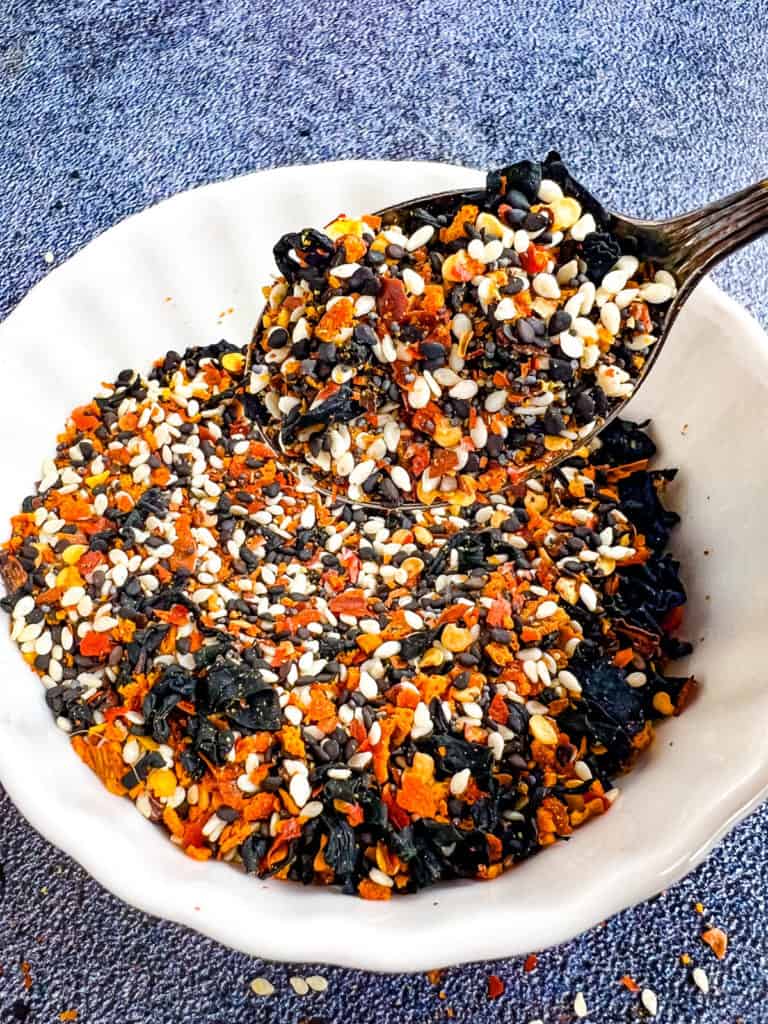
more japanese recipes you’ll love
- Yaki Onigiri
- Chicken Karaage
- Spicy Miso Ramen
- Ramen Tare
- Soy Sauce Eggs
- Sunomono
- Onigiri
- Miso Salmon
- Stir-Fried Lotus Root
- Chawanmushi
- Japanese Souffle Pancakes

Shichimi Togarashi
Ingredients
- 1 tablespoon white sesame seeds
- 1 tablespoon black sesame seeds
- 2 teaspoons poppy seeds
- 1 teaspoon ground sansho peppercorns
- 2 tablespoons red pepper flakes preferably Japanese chile
- ½ sheet toasted nori
- 1 tablespoon dried orange or tangerine zest
Instructions
- In a bowl, combine all of the ingredients and stir to mix well.
- Transfer the mixture to a spice grinder and pulse a few times until coarsely ground (not a fine powder). Or use a mortar and pestle to break up the ingredients a bit.
Notes
Nutrition
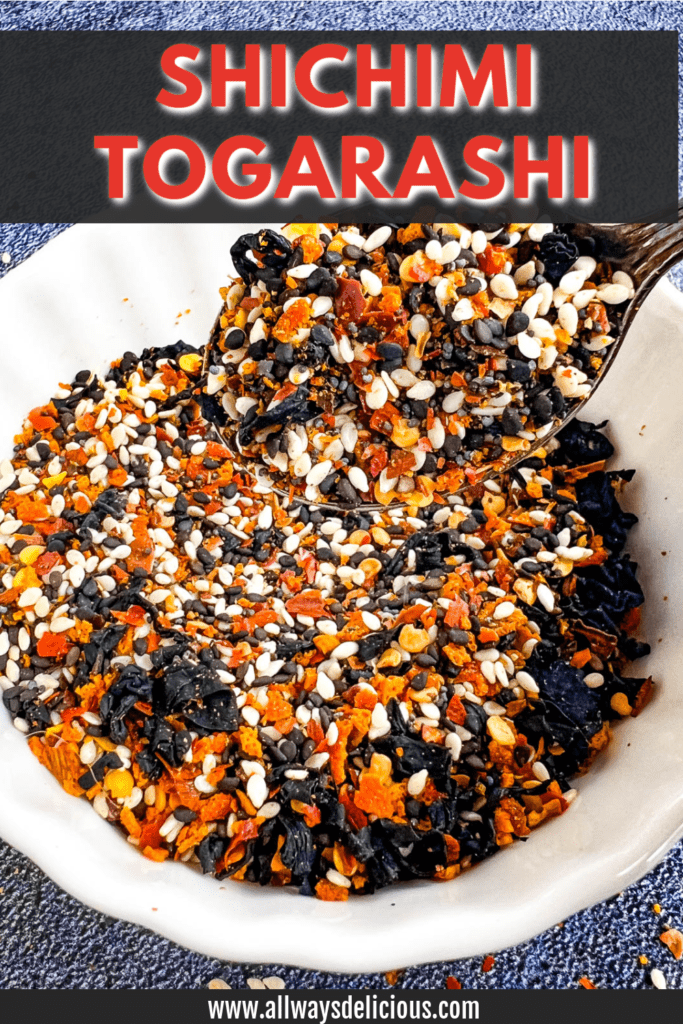




Ooh I love togarashi! I put it on everything. I have a pound of wild Maine seaweed that I will use to make this.
I use this in place of pepper now, delicious on almost everything and adds a nice kick. Try it with some homemade salmon patties.
I’m pretty sure shichimi and nanami togarashi are the same thing. Shichi and nana are both the Japanese word for 7. Some people prefer to say nana because shi sounds like the word for death. Same reason they have two words for the number 4, shi and yon.